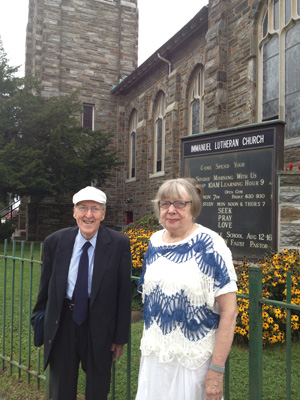 TREND 5
TREND 5
The Long Tail
Huh? What’s the Long Tail?
This is a term familiar to marketers. It refers to niche marketing. Major retailers are generally interested in selling lots of just a few products. The emphasis is on creating products that will appeal to everyone.
This traditional business model is why it was hard to get a book published. Publishers wanted to make sure it was worth printing 100,000 copies minimally. If your interest was canoeing in Nepal or the life-cycle of spiders, you were out of luck!
The internet has made it possible for products that appeal to smaller audiences to be profitable, too. In fact, there is great potential in recognizing the people who go against the mainstream. It is a numbers game. There are an awful lot of people in the world!
The result in the publishing world, with which I am most familiar, has been an exciting explosion of new titles.
What does this mean for Church?
Actually, the Church is the original long-tail marketer. They’ve just forgotten it! Click to Tweet.
Jesus’ approach to ministry describes the long tail. Seek and serve the marginal members of society—everyone from the rich man and educated Nicodemus—to the dead, infirm, and dying—to the women and children with no status—to the foreigners.
As the Church grew, every neighborhood was a “niche.” But today, the Church is abandoning its strength, hoping for economic strength in size.
This may be a long-term disaster.
Large churches are not filling the gap of the abandoned small faith communities. A few are growing slowly but most are in decline. People like to worship with people they know. Being part of a crowd may be fiscally desirable, but faith doesn’t work that way. Most churches will continue with memberships hovering between 100 and 300 ( a third of them active) until the Church abandons them. That’s the way it’s always been and it follows the findings of sociology that it’s the way it will always be.
We already know the small church works well—perhaps even best. The challenge to the Church is to keep small churches viable and in keeping with their expectations. This requires entrepreneurial thinking which is not prevalent in the Church.
Churches like to do things the same way (while preaching transformation). They have an expensive infrastructure that resists change and requires size.
The concept can even be seen in their approach to mission.
Redeemer’s membership was always an immigrant population. Early members were western European. The immigrants of recent years represented five continents. Many from East Africa found their way to our door. We welcomed them and they were part of a truly transforming ministry.
The Synod, on the other hand, had a different vision for us. The older immigrants and their descendants had to die. (They waited eight years for this to happen at one point in our history—2000-2008). But new members came along. Their plan was not working.
Their pronouncement: White Redeemer must be allowed to die. Black Redeemer . . . we can put them anywhere.
Actually, SEPA had a vision for a Pan-African church. Something big. Something to boast about. Something that could exist without bothering white Lutherans.
 A Pan-African Church! When you realize the size of Africa, the concept is ridiculous. Africa is a BIG place, with varied customs and cultures. Our African members were amused at the idea. “They don’t speak our language in Zimbabwe!”
A Pan-African Church! When you realize the size of Africa, the concept is ridiculous. Africa is a BIG place, with varied customs and cultures. Our African members were amused at the idea. “They don’t speak our language in Zimbabwe!”
This is nothing new. Chestnut Hill, Mt. Airy, Germantown, Roxborough, Manayunk and East Falls look so close on the map. The managerial temptation is to try to unite them for efficiency and cost-savings. Four church closings in this area have not bolstered the memberships of the other churches. (Advent in Mt. Airy, Grace and Epiphany in Roxborough and the seizing of land in East Falls). (Shh! The doors may be locked, but we are still open!)
Urban people know their neighborhoods are distinct. So, too, are their ministries.
With size and managerial motives (among others, we suspect), SEPA Synod orchestrated the closing of our growing viable community congregation. Their plan (never discussed with our leaders) was to set our white members free to fend for ourselves (excommunicate us) and assign our black members to another site. Result: 82 Lutherans locked out. A squandering of new blood!)
Unfortunately, when you close churches in the neighborhoods where immigrants live, you take the resources that would serve them. Everyone in the neighborhood loses and the takers of the property get only a short-term advantage as they quickly spend the assets the communities developed over a century.
The future of the Church may be in rediscovering its past. The trick will be finding a way to make Long Tail Evangelism fiscally viable. The more active and inviting the ministry, the more realistic this will be.
Redeemer was well on our way to implementing a plan which would be supporting the congregation today with ample dollars to spare. We saw ourselves serving several niches and felt uniquely qualified for this type of ministry.
If the Church is to be successful in recognizing the benefits of Long Tail Evangelism, they must help congregations explore the use of their assets for ministry, not seize them for their own financial fix.
The result is long-term loss to faith, community and potential.
Perhaps it is time we return to Jesus’ approach. Love that long tail.




